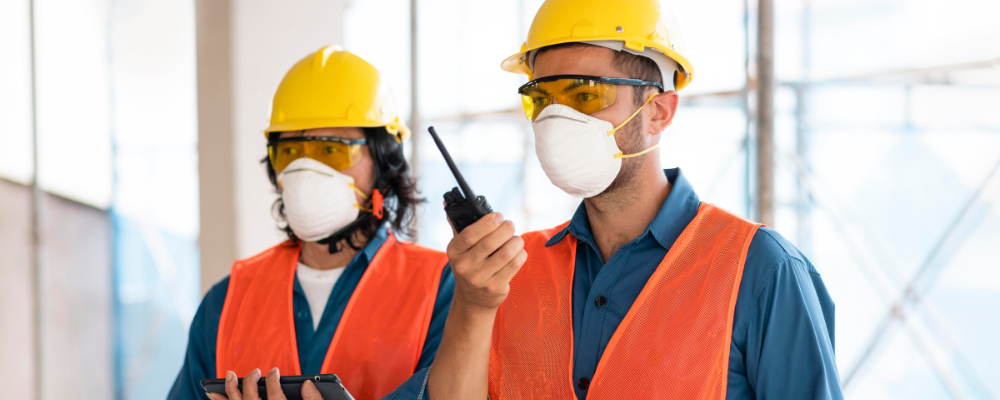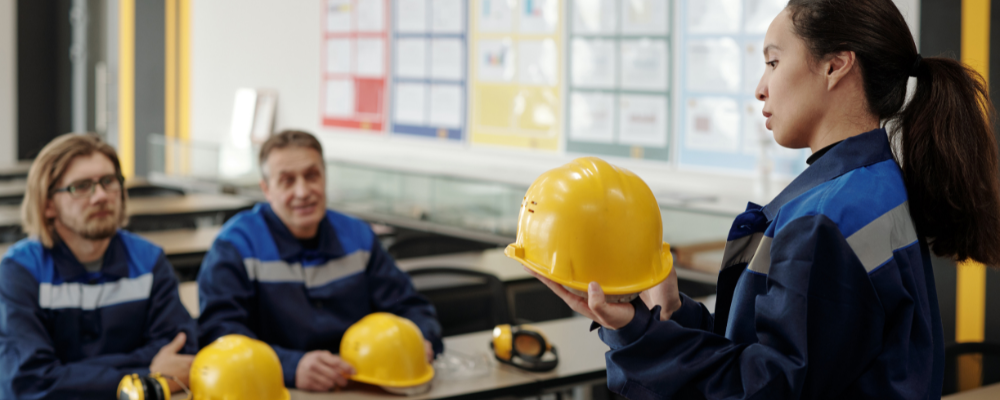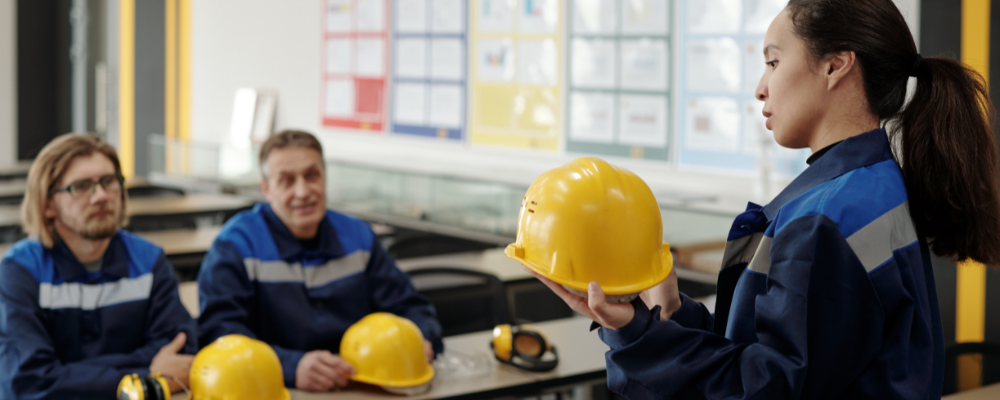
Introduction:
In the high-risk environment of construction work, prioritizing the safety of your workforce is paramount. Respirators, specifically designed to protect against hazardous airborne particles, play a pivotal role in safeguarding the well-being of construction workers. This comprehensive guide will delve into the essential aspects of using respirators and introduce you to some key products from Site and Safety Solutions, ensuring the highest safety standards.
Understanding Respirators for Construction Workers
The Importance of Respirators in Construction
Construction sites are rife with airborne contaminants, including dust, chemicals, and fumes. To mitigate potential health risks, construction workers must use respirators. These devices shield against particulate matter and help minimize inhalation of harmful substances.
Types of Respirators
-
CH RESPIRATOR KN95 WHITE
The CH Respirators KN95 White is a high-quality disposable respirator with superior filtration efficiency. It’s engineered to protect against 95% of airborne particles, making it a versatile choice for construction workers. Its lightweight design ensures comfort during extended wear, and its adjustable nose clip enhances the seal, reducing the risk of leakage.
-
Honeywell 7700 Series Half Mask Respirator 770030
The Honeywell 7700 Series Half Mask Respirator is a top-tier choice for those seeking reusable Respirators protection. It accommodates various filter types and is built for durability. The low-profile design ensures a wide field of vision, a critical feature in construction work.
-
North P100 Safety Particulate Filter 7580P100
North P100 Safety Particulate Filter 7580P100 is an essential accessory for respiratory protection. This P100 filter offers exceptional protection against airborne particles, making it a valuable addition to your respirator setup. Its compatibility with North respirators ensures easy integration into your safety gear.
Proper Respirator Use for Construction Workers
Using respirators in the construction industry is critical for safeguarding the health and well-being of workers exposed to a myriad of airborne contaminants and hazardous particles. However, merely wearing a respirator is insufficient to ensure maximum protection; it must be used correctly. This note delves into three crucial aspects of proper respirator use for construction workers: Fit Testing, Seal Check, and Filter Replacement.
Fit Testing:
Before a construction worker relies on a respirator for protection, it is imperative to ensure it fits properly. Fit testing is a systematic process that confirms the secure seal formed by the respirator around the wearer’s face. This seal is paramount in preventing harmful airborne particles from infiltrating and is a key element in maximizing the effectiveness of respiratory protection.
Fit testing involves the following steps:
- Selection of the Right Size: The first step is to choose the correct respirator size that matches the individual’s facial contours. A too-loose or tight respirator can compromise the seal and, consequently, the protection.
- User Seal Check: The wearer should conduct a user seal check once the respirator is donned. It involves covering the exhalation valve with the palm of one’s hand and exhaling gently. If the respirator is sealed properly, a slight pressure build-up should occur, ensuring that the seal is secure.
- Professional Fit Testing: Professional fit testing is advisable for more rigorous assurance. Qualitative or quantitative fit testing methods assess the respirator’s fit in a controlled environment, helping to determine if it meets industry standards and regulatory requirements.
A proper fit is fundamental to the effective operation of the respirator, and regular fit testing is necessary to account for changes in facial features or the respirator itself.
Seal Check:
A seal check is a simple yet crucial step that construction workers should perform each time they do a respirator. This process ensures that the respirator remains securely fitted and doesn’t compromise their safety.
To conduct a seal check:
- Cover the Exhalation Valve: While wearing the respirator, cover the exhalation valve (usually located in the front) with your palm.
- Exhale Gently: Exhale gently and pay close attention to any air leaks around the edges of the respirator. The seal is secure if no air escapes, and the respirator remains snugly sealed.
A seal check is a quick but essential routine that can be done in seconds and can prevent potential issues caused by an improper seal.
Filter Replacement:
In construction, respirators use filters to capture and remove harmful airborne particles. Over time, filters may become clogged or deteriorate, reducing their effectiveness. To maintain optimum protection levels, frequently inspect and replace filters as necessary.
Site and Safety Solutions offers a range of filters suitable for different work conditions, ensuring you have the right filter for the job. Follow these guidelines for filter replacement:
- Regular Inspection: Periodically inspect the condition of the filters. They should be replaced immediately if they are visibly soiled, damaged, or clogged.
- Follow Manufacturer’s Recommendations: Manufacturers often provide guidelines for filter replacement, and these should be adhered to strictly.
- Consider Work Conditions: The filter choice should be based on the specific contaminants and airborne particles in your work environment.
- Maintain a Stock of Replacement Filters: Always have an adequate supply of replacement filters on hand to avoid any delays in maintenance.
Proper filter maintenance ensures that your respirator consistently delivers the protection it is designed for, making it a crucial component of construction worker safety.
In conclusion, ensuring proper respirator use for construction workers involves fit testing to establish a secure seal, regular seal checks to verify ongoing effectiveness, and timely filter replacement to maintain maximum protection levels. By rigorously adhering to these practices, construction workers can minimize health risks and maintain a high safety standard. Site and Safety Solutions offer the necessary tools and resources to support these crucial aspects of respiratory protection.

Additional Safety Measures
Ensuring the safety and well-being of construction workers goes beyond using respirators. Additional safety measures must be implemented to create a comprehensive safety culture on construction sites. These measures are pivotal in minimizing risks, protecting workers from hazards, and maintaining a safe working environment. Here are some crucial additional safety measures that construction workers should adhere to:
- Regular Safety Training and Awareness Programs:
Continuous safety training and awareness programs are essential for construction workers. These programs serve several critical purposes: -
- Skill Enhancement: Safety training helps workers acquire and improve the skills necessary to identify and mitigate potential hazards on the construction site. It equips them with the knowledge needed to operate machinery and tools safely.
- Regulatory Compliance: Safety training ensures construction workers know and adhere to safety regulations and guidelines. It is vital in an industry with evolving safety standards.
- Emergency Preparedness: Training programs should also cover emergency response procedures, including how to react to accidents, fires, or other unexpected incidents.
- Health and Well-being: Workers should be educated on the importance of personal health and well-being. It includes information on managing fatigue, stress, and maintaining a healthy lifestyle.
- Tool and Equipment Safety: Training programs should emphasize the correct use and maintenance of tools and equipment, promoting their longevity and the safety of workers.
- Wearing Appropriate Personal Protective Equipment (PPE):
Personal Protective Equipment (PPE) is crucial to construction site safety. Construction workers should be diligent about wearing the necessary PPE based on their specific tasks. The types of PPE commonly used in construction include:
-
- Hard Hats: Protect the head from falling objects or overhead hazards.
- Safety Glasses and Goggles: Shield the eyes from debris, dust, and chemical splashes.
- High-Visibility Vests: Enhance visibility and reduce the risk of accidents involving moving vehicles and equipment.
- Hearing Protection: Guard against loud noise levels prevalent in construction environments.
- Gloves: Protect hands from cuts, abrasions, and exposure to hazardous substances.
- Respirators: As mentioned in the blog, respirators provide respiratory protection against airborne contaminants.
- Steel-Toed Boots: Safeguard the feet from heavy objects and potential crushing hazards.
- Fall Protection Gear: Essential when working at heights, including harnesses, lanyards, and anchor points.
Adhering to PPE requirements is non-negotiable, as it directly affects the safety of workers. Employers should ensure that PPE is readily available and that workers are trained on its proper use and maintenance.
- Maintaining Good Hygiene and Cleanliness:
Maintaining hygiene and cleanliness is essential to minimize contamination risks and promote overall health and well-being on the construction site. Key practices include:
-
- Handwashing: Encourage workers to regularly wash their hands, especially before eating, after using the restroom, and after handling hazardous materials. Access to handwashing stations or hand sanitizers should be provided.
- Clean Workspaces: Promote a clean and organized workspace. It minimizes tripping hazards, reduces clutter, and facilitates efficient work practices.
- Proper Waste Disposal: Dispose of waste materials and hazardous substances in designated containers according to regulations. It prevents environmental contamination and workplace hazards.
- Personal Cleanliness: Workers should maintain personal cleanliness to prevent the spread of germs and bacteria among the team.
While respirators are crucial for protecting construction workers from airborne contaminants, safety in the construction industry involves a multi-faceted approach. Regular safety training, using PPE correctly, and maintaining good hygiene and cleanliness are integral components of construction site safety. When combined with respirators, these additional safety measures help create a safer working environment and reduce the risks associated with construction-related hazards. Employers and workers should work together to prioritize safety and ensure that these measures are consistently implemented.
For more information, visit our website and Facebook page.
For more products, visit our website :
Honeywell 7700 Series Half Mask Respirator 770030
North P100 Safety Particulate Filter 7580P100 – 1 Pair
Conclusion
Prioritizing the health and safety of construction workers is a non-negotiable commitment. Utilizing respirators, such as the CH RESPIRATOR KN95 WHITE, Honeywell 7700 Series Half Mask Respirator, and North P100 Safety Particulate Filter 7580P100 from Site and Safety Solutions, can significantly reduce the risks associated with airborne contaminants. Combined with proper fit testing, seal checks, and filter replacement, these tools empower construction workers to breathe easily while on the job.
Enhance construction site safety and protect workers by equipping them with suitable respirators from Site and Safety Solutions. Your team’s well-being is our top priority.










